A number of pithy essays by Michael O’Donohoe sit among the vast quantity of papers in the collection.
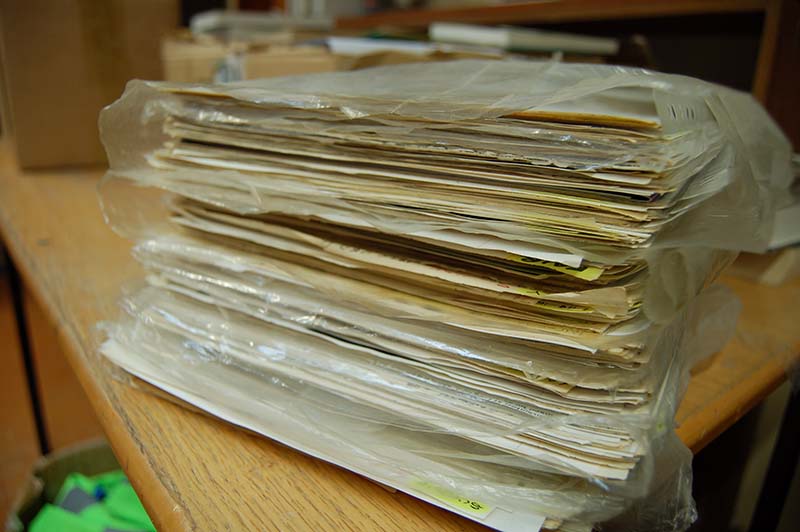
Topics covered are wide in variety, for example, the GAA, Lord Headley, local streets and lanes, Sir Richard Griffith and the Moonlighters.
The Moonlighters, transcribed below, provides an informative sketch of the organisation from its foundation in 1879.
The Moonlighters
A secret organisation was founded in Castleisland in 1879. Its stated purpose was to free Ireland from English rule and its main aim was to help local farmers oppose “land grabbing” in the area.
In the latter half of the 1870s a world economic slump created an agricultural crisis in Ireland causing widespread distress amongst the people. 1879 was a particularly bad year when there was partial failure of crops and very little turf saved in Castleisland. The Presentation Sisters helped to alleviate some of the hardship by providing daily meals for up to 200 children. A relief association was also set up to help cope with the problem.
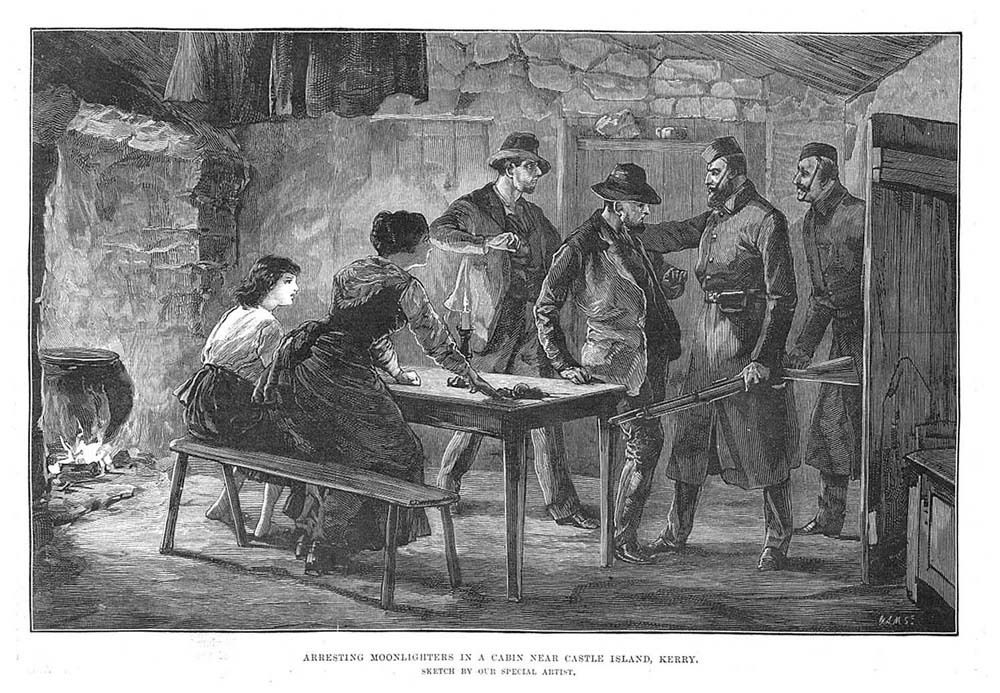
One evening during the harsh winter of 1879 the first Moonlighters were sworn in. They were Robert (Bob) Finn, Batt O’Leary and Justin McCarthy. The men met at Cahereens and became the founding members of the first company of Moonlighters.
Bob Finn became Captain Moonlight. Their next step was to procure arms. As Bob and Justin were coopers, they borrowed their fathers’ axes and thus armed, the intrepid trio made their first raid for guns at Farranabrack and at Mounteagle hunting lodge.1
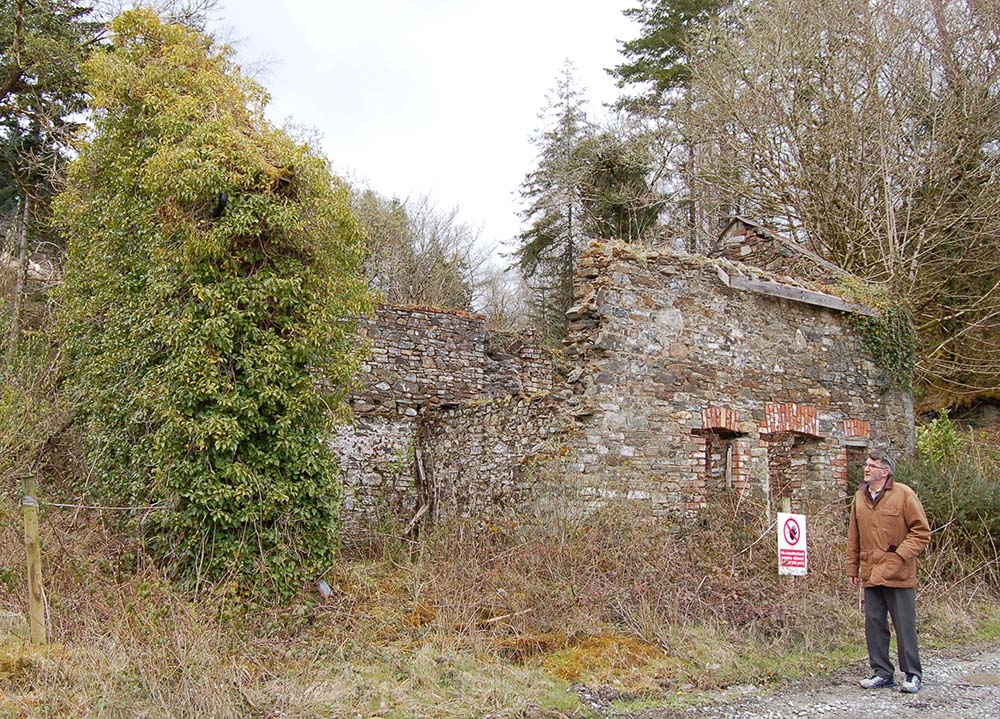
Within a week they were the proud possessors of eight shotguns and a bullet mould. New recruits, as many as 20, joined within days to fight the practice of land grabbing in the area. Other companies of Moonlighters followed Castleisland’s example in practically every parish in Munster.
Over the following months, agrarian disturbances increased drastically. One notable incident took place in Glountane. A labourer called O’Leary, who held a house from Lord Ventry, emigrated to America to find work. Mrs O’Leary and her family were evicted in August 1880 and took shelter in an outhouse.
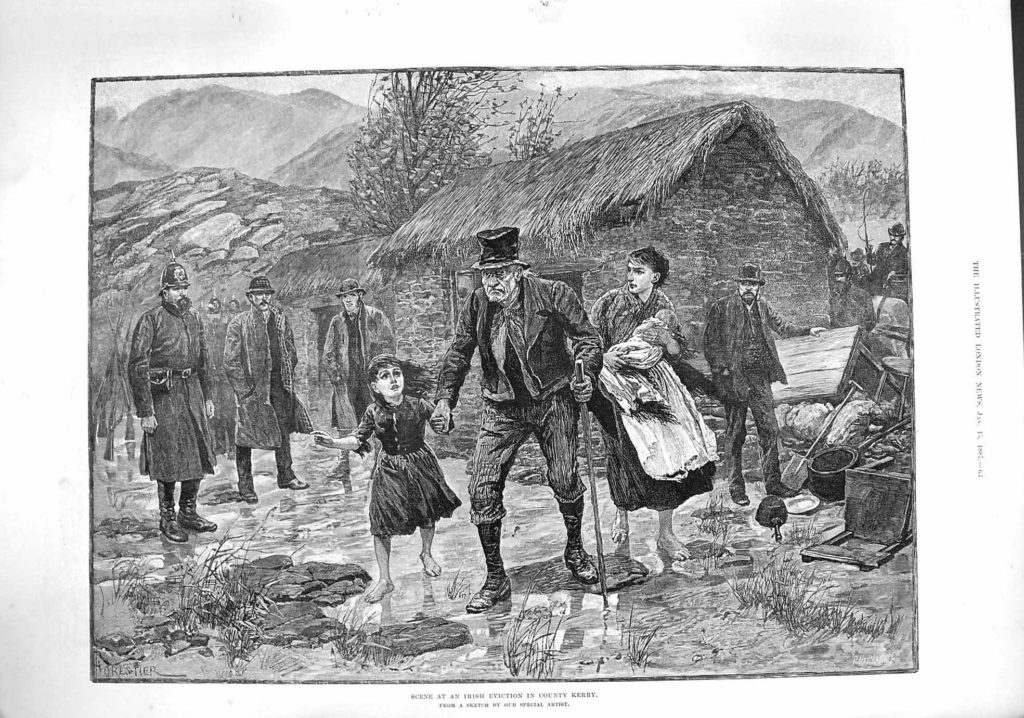
On the night of 6th September 1880, 60 Moonlighters armed with guns, revolvers and pitchforks reinstated Mrs O’Leary in her home, with her children and belongings. This incident caused great excitement in the district.

To restore order in Ireland, a Coercion Bill was passed in Parliament on 2nd March 1881. This was to mark the beginning of years of disturbance as the Moonlighters struck again and again. One of the most notorious incidents was the killing of Arthur Herbert, a local magistrate, at Lisheenbawn Cross on 30th March 1882.2
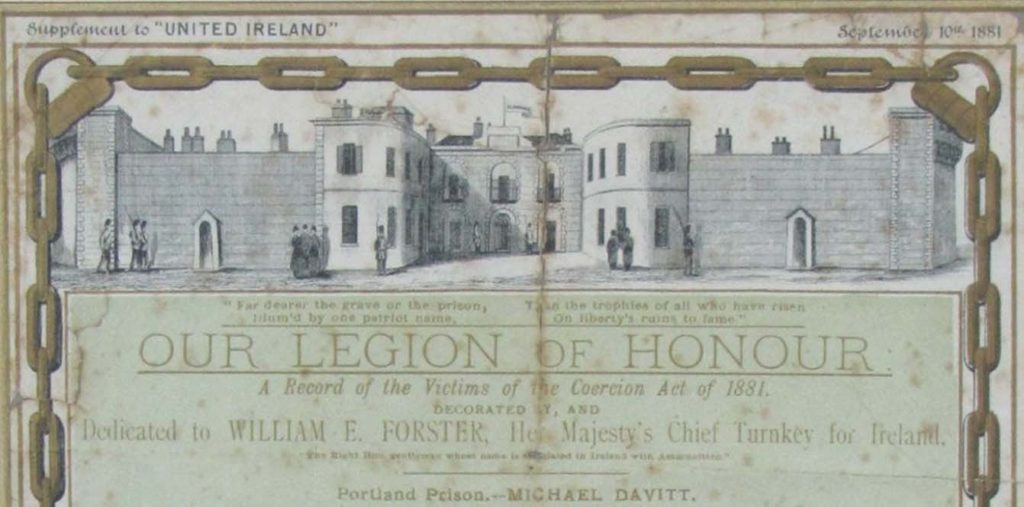
The Moonlighters achieved such fame and notoriety that when Charles Stewart Parnell was asked who would take his place if he were arrested, replied “Captain Moonlight”.
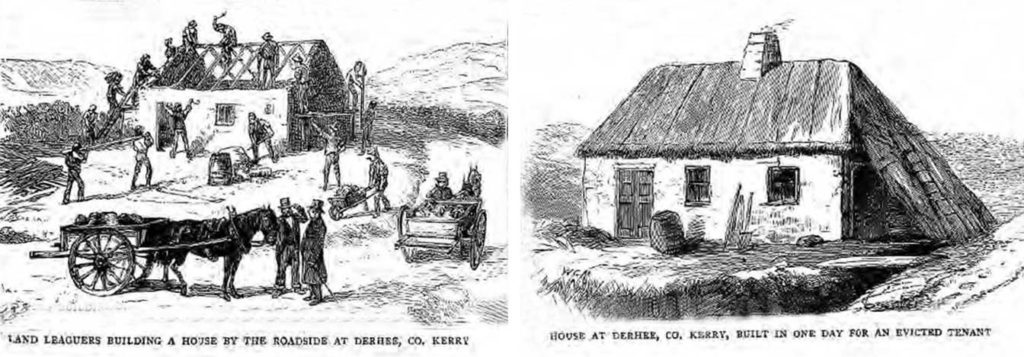
In Castleisland, ‘Bob Finn’s Corner’ became a well-known meeting place and was situated at Church Street corner.
Bob Finn, Captain Moonlight, died on the 5th August 1935 and was buried in Old Kilbannivane Cemetery.3
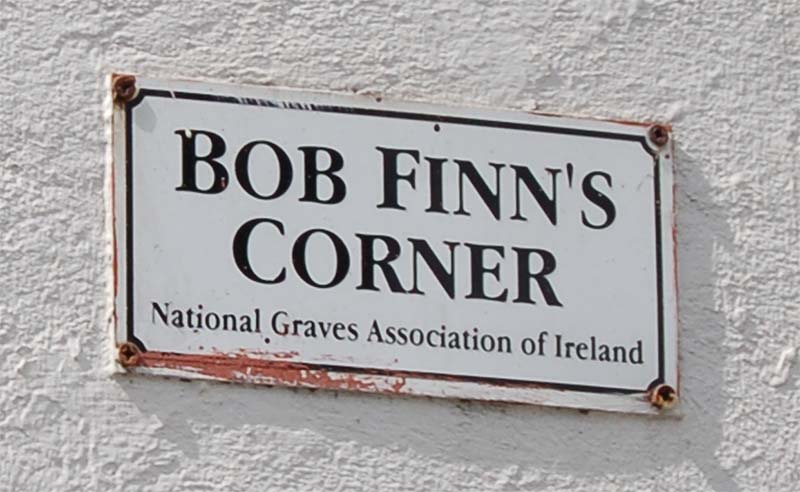
Further reference to the moonlighting period can be found on this website, ‘Castleisland in 1882’, ‘They Hanged John Twiss’ and ‘Browne, Poff and Barrett’.4
Johnnie Roche, Chairman of the Michael O’Donohoe Memorial Heritage Project Committee, is also author of ‘Castleisland – Home of the Moonlighters’.5
Johnnie has a particular interest in this subject as the above named brothers Quinlan, imprisoned in Limerick jail in 1881 under the Coercion Act, were his material ancestors. He writes:
The Brothers Quinlan
.
Three Quinlan brothers were among the first arrested within days of the Coercion Bill becoming law in the House of Commons on March 14, 1881. The eldest, William, was taken to Kilmainham gaol with Edmond Hussey, Terence O’C Brosnan, P D Kenny and possibly others, while Pat and Laurence Quinlan were lodged in Limerick prison with a number of others from the area.
.
Laurence was 15yrs and Pat 18 but they didn’t protest their youthfulness at the time. Their father, Maurice Quinlan (my great grandfather), who was then chairman of the Tralee/Castleisland district Board of Guardians, contacted the MP, Healy and he raised the matter in Parliament, much to the embarrassment of the authorities. Laurence was released forthwith but I’m not sure when Pat was released – sometime later. About a year after this, William was given compassionate leave, when his brother Michael died at home and when he was at the railway station, returning to Dublin, he got word that he was pardoned.
.
William was mentioned twice in T M Donovan’s History of East Kerry and was recognised as one of the Land League/Moonlighter leaders. A great friendship developed between his group and Parnell in Kilmainham, hence Parnell’s reply, when asked who would replace him, “Captain Moonlight”! Edmond Hussey was vice-Captain at the time. The friendship lasted and the Quinlan brothers were listed as being on the platform with Parnell whenever he came to the southwest.
.
The Quinlans were a long established family in the Castleisland district over hundreds of years. The brothers’ grandfather, Michael Lawrence Quinlan, was vice-chairman of the Board of Guardians at about the time of the famine. Their father later became chairman, as well as chairman of the Irish National League in Currow/Castleisland and Captain Moonlight after Bob Finn left for Australia.
.
Pat (PM) was appointed Clerk of the Union and became first secretary/manager of the newly formed Kerry County Council. He was succeeded by his son Michael, who died in the terrible ‘flu of 1918. He was succeeded in turn by his brother Willie Quinlan, who retired as County Manager in 1953. Other descendants have been prominent in our national army and I believe that Comdt Pat Quinlan of Congo fame and film (The Siege of Jadotville) is of the same family.
.
The Quinlan family was just one of the number who achieved so much for so many by ‘people power’. “The victors write history” and so there is very little record of the considerable achievements of the Castleisland Land League/Moonlighters. T M Donovan, in his History of East Kerry, summed it up when he wrote that within one year, evictions were history in the Castleisland region.
.
Official references to the period written by landlords and the police highlight individual atrocities which, though to be condemned, do not give a balanced picture. The real work of the Castleisland League/Moonlighters was monumental in that it led directly to the ending of evictions/land-grabbing and rack-renting, and to the passing of acts of parliament that allowed the people of Ireland to own, buy and sell property as we still know it today.
.
I firmly believe that if the country had remained united behind Parnell, as did the Castleisland Land Leaguers, they would have achieved 32 county home rule by the turn of the twentieth century.
___________________
1 See Philip of the Hundred Cows A folk tale from Cordal (2015) for the early history of Mounteagle Lodge. Some years later, Robert Tier, head gamekeeper on the Drummond Estate who resided at Mounteagle Lodge, was robbed of a six chamber revolver. 'The National School at Mounteagle, near Castleisland, in the county Kerry has been boycotted. It appears the teacher, a man named John Curtin, recently surveyed a mountain that was burned down there for the purpose of having a claim for compensation lodged. This gave offence to the people and notices were served upon the parents of the children, warning them to withdraw them from the school or they would be visited by Captain Moonlight' (Kerry Evening Post, 14 June 1882). 2 Further reference to the murder of Herbert in IE MOD/15, IE MOD/35 & IE MOD/55. 3 The following links (series ref IE MOD/29/29.4) provide access to Michael O'Donohoe's notes on Fenian Robert (Bob) Finn (1860-1935), 'the original Captain Moonlighter' which have particular focus on genealogy. ie-mod-29-29-4-29-4-1 ie-mod-29-29-4-29-4-2 ie-mod-29-29-4-29-4-3 ie-mod-29-29-4-29-4-4 ie-mod-29-29-4-29-4-5 ie-mod-29-29-4-29-4-6. 4 See also IE MOD/29, IE MOD/87, IE MOD/55/55.1/55.1.207 and IE MOD/15 ('A E' Herbert's casting vote ensured that the moonlighters man was defeated. Three days later he was murdered'). 5 Published in Journal of the Kerry Archaeological & Historical Society (2012), Series 2, Vol 12, pp159-166. Copy held in IE/A20/2 (26). The collection also contains, 'Death of Captain Moonlight, A Hero of the Land War of the Eighties' by Castleisland historian, T M Donovan (Derry Journal, 21 August 1935); 'The Land War and the Moonlighters' (IE/A20/2 (19). Essay alludes to 'The Little Famine' of 1877-1879, described by Cliodhna Cussen in An Droch Shaol (1980) a copy of which is held in the collection (IE/A20/2 (24)).


